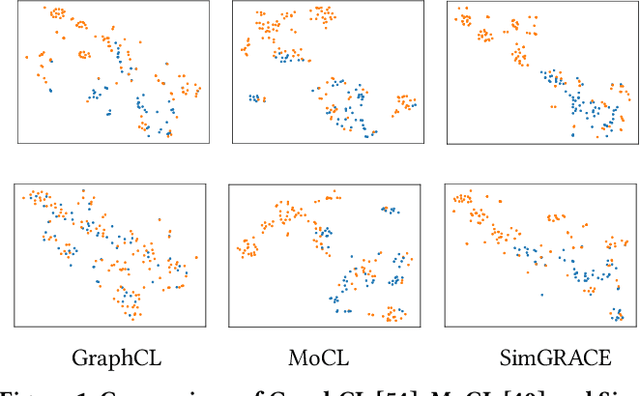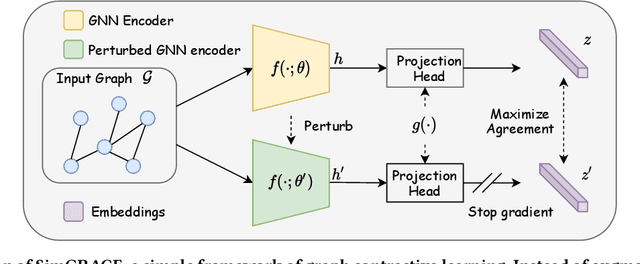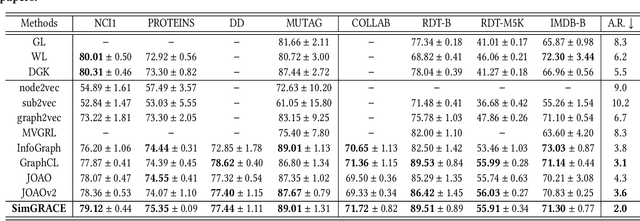Jintao Chen
GraphTEN: Graph Enhanced Texture Encoding Network
Mar 18, 2025Abstract:Texture recognition is a fundamental problem in computer vision and pattern recognition. Recent progress leverages feature aggregation into discriminative descriptions based on convolutional neural networks (CNNs). However, modeling non-local context relations through visual primitives remains challenging due to the variability and randomness of texture primitives in spatial distributions. In this paper, we propose a graph-enhanced texture encoding network (GraphTEN) designed to capture both local and global features of texture primitives. GraphTEN models global associations through fully connected graphs and captures cross-scale dependencies of texture primitives via bipartite graphs. Additionally, we introduce a patch encoding module that utilizes a codebook to achieve an orderless representation of texture by encoding multi-scale patch features into a unified feature space. The proposed GraphTEN achieves superior performance compared to state-of-the-art methods across five publicly available datasets.
HORAE: A Domain-Agnostic Modeling Language for Automating Multimodal Service Regulation
Jun 06, 2024



Abstract:Artificial intelligence is rapidly encroaching on the field of service regulation. This work presents the design principles behind HORAE, a unified specification language to model multimodal regulation rules across a diverse set of domains. We show how HORAE facilitates an intelligent service regulation pipeline by further exploiting a fine-tuned large language model named HORAE that automates the HORAE modeling process, thereby yielding an end-to-end framework for fully automated intelligent service regulation.
SimGRACE: A Simple Framework for Graph Contrastive Learning without Data Augmentation
Feb 11, 2022



Abstract:Graph contrastive learning (GCL) has emerged as a dominant technique for graph representation learning which maximizes the mutual information between paired graph augmentations that share the same semantics. Unfortunately, it is difficult to preserve semantics well during augmentations in view of the diverse nature of graph data. Currently, data augmentations in GCL that are designed to preserve semantics broadly fall into three unsatisfactory ways. First, the augmentations can be manually picked per dataset by trial-and-errors. Second, the augmentations can be selected via cumbersome search. Third, the augmentations can be obtained by introducing expensive domain-specific knowledge as guidance. All of these limit the efficiency and more general applicability of existing GCL methods. To circumvent these crucial issues, we propose a \underline{Sim}ple framework for \underline{GRA}ph \underline{C}ontrastive l\underline{E}arning, \textbf{SimGRACE} for brevity, which does not require data augmentations. Specifically, we take original graph as input and GNN model with its perturbed version as two encoders to obtain two correlated views for contrast. SimGRACE is inspired by the observation that graph data can preserve their semantics well during encoder perturbations while not requiring manual trial-and-errors, cumbersome search or expensive domain knowledge for augmentations selection. Also, we explain why SimGRACE can succeed. Furthermore, we devise adversarial training scheme, dubbed \textbf{AT-SimGRACE}, to enhance the robustness of graph contrastive learning and theoretically explain the reasons. Albeit simple, we show that SimGRACE can yield competitive or better performance compared with state-of-the-art methods in terms of generalizability, transferability and robustness, while enjoying unprecedented degree of flexibility and efficiency.
* Accepted by The Web Conference 2022 (WWW 2022)
Debiased Graph Contrastive Learning
Oct 05, 2021



Abstract:Contrastive learning (CL) has emerged as a dominant technique for unsupervised representation learning which embeds augmented versions of the anchor close to each other (positive samples) and pushes the embeddings of other samples (negative samples) apart. As revealed in recent works, CL can benefit from hard negative samples (negative samples that are difficult to distinguish from the anchor). However, we observe minor improvement or even performance drop when we adopt existing hard negative mining techniques in Graph Contrastive Learning (GCL). We find that many hard negative samples similar to anchor point are false negative ones (samples from the same class as anchor point) in GCL, which is different from CL in computer vision and will lead to unsatisfactory performance of existing hard negative mining techniques in GCL. To eliminate this bias, we propose Debiased Graph Contrastive Learning (DGCL), a novel and effective method to estimate the probability whether each negative sample is true or not. With this probability, we devise two schemes (i.e., DGCL-weight and DGCL-mix) to boost the performance of GCL. Empirically, DGCL outperforms or matches previous unsupervised state-of-the-art results on several benchmarks and even exceeds the performance of supervised ones.
 Add to Chrome
Add to Chrome Add to Firefox
Add to Firefox Add to Edge
Add to Edge